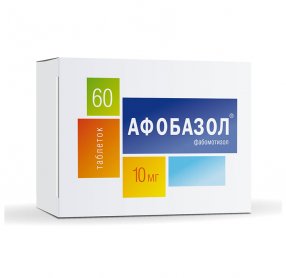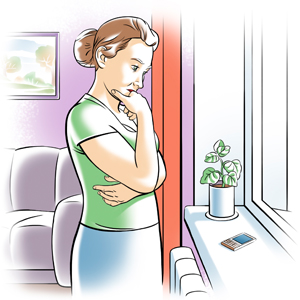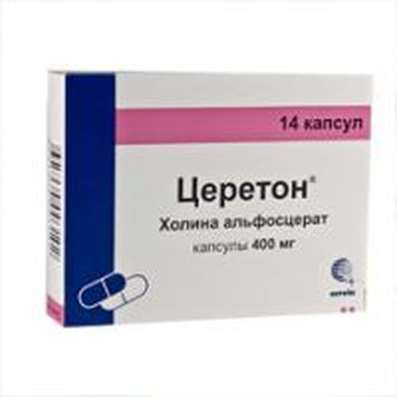Do not Be an Addict! How does Dependence arise?
29 Mar 2017
Speech today will focus on such a rare topic as receptors, about reducing or increasing their effectiveness.
In our issues, we often talk about increasing dopamine, acetylcholine, GABA, and how good it all is. Technically, there is no deception. The nervous system of high order is a completely different way of life and thought.
However, there is a downside! Have you ever wondered why we recommend taking either a course like piracetam and hyperzin, or occasionally, 1-2 times a week, things like DMAA, Phenibut? Organism is important rest and today you will understand why. You can buy Phenibut.
So, if we go down to the level of biochemistry, then our whole life is a pursuit of positive neurotransmitters and hormones. Most people get them with less acceptable work, cigarettes, alcohol and leave. Someone is fanatic in some kind of activity: sport, business, science, art, career. Someone takes drugs.
Receptors
These are pieces on the surface of cells with which neurotransmitters interact. If a person bursts out from some upcoming event, then he develops dopamine, which is attached to the right receptors, providing an emotional experience.
Depending on the amount of the neurotransmitter, the receptors can first increase or decrease their activity, and then increase and decrease the number of receptors. First, the activity changes, and then a specific number of receptors.
For example, let us recall the previously voiced situation: work 5/2 and drink at the weekend, the person has 30 receptors on the cage and within 5 working days his impulse produces 5-7 molecules of dopamine, and when he swells at the weekend with a friend - then 12 -15. It turns out, he does not have a very good mood for 5 days and a good 1-2 days. In the second situation, the goal-oriented person, stable 9-11 molecules and jumps from 7 to 20, the mood is always better than normal. In the third, drug addiction - 4 molecules and waves at 50-70 before euphoria.
The most dangerous situation is the 3rd, slightly worse 1 and optimally - 2nd. Well, enough with children's examples, we turn to neurobiology.
Densitization of receptors
In the case of high jumps in any neurotransmitter, desensitization of the receptors or loss of sensitivity occurs with time. This explains the desire to increase the dosage of something. On the other hand, during the lifetime of "no drugs", this is much slower and the quality is, in general, useful, it helps to strive for more. You bought your first Lada - a lot of dopamine, then you got used to it and you want something better - let's say a 7-year-old unpretentious foreign car and so on. The body does not know that drugs artificially gives you a sports car for several hours, it reduces the sensitivity of receptors! As a result, a poor addict either increases the dosage or sits in a depression, because the peak of dopamine has been asleep the day before yesterday, and the sensitivity of the receptors is restored several weeks.
It is clear that the periodicity in reception for desensitization is necessary. The first techniques of almost any drugs are felt identically, then everything is much worse. But enough with the addicts!
As you probably already understood - loss of sensitivity of receptors - the process is useful and it motivates not to sit still, under normal conditions. By the way, if you get through the connection to a steep paid place - the sensitivity will fall almost like that of drug addicts, hence the inadequate behavior of majors.
Decreased receptor density
This process occurs after persistent desensitization and it is longer, according to different data, 2-3 months and the difference is palpable. The process adapts to the new reality, when there is a lot of dopamine, and sensitivity is reduced. For example, a drug addict regularly takes drugs and, at first, the sensitivity of receptors decreases, and then the receptors die. And normally he will feel himself only after a few months, when the activity begins to increase, and then the number of receptors.
Place of nootropics
It is logical that you asked the question: "So nootropics are like drugs, they also increase dopamine." And the answer is: Sugar also increases dopamine, the difference in the power of lifting! Nootropics are simply unable to act as much as narcotics, that's why they actually unrealistic to rely on, although, judging by the comments, many are desperately trying. This small increase is just felt in the form of brain activation, enlightenment, etc. And usually people direct this to something useful.
In fairness, it should be noted that long-term administration, in theory, can also lead to desaturization and a decrease in the density of acetylcholine and dopamine receptors, although not as strong as in the case of drugs, but there are also loopholes about them later.
How to feel the buzz again from a cup of coffee?)
Now you know the right answer with all the laws of biology: you need to increase the sensitivity and then the density of the receptors!
The quest for asceticism, as Steve Jobs said, "Stay hungry, stay foolish." For 4-8 weeks, forget about watching TV shows, drinking, cigarettes, games. Some, like me, always drink something to the brain. Do not worry - do not be stupefied) This is the way - the best! You can even in the literal sense of the day to starve and then the receptors will become aggravated, and that's all. After a day of hunger, a plate of simple pasta or omelette will seem to you a delicious dish from an expensive restaurant. Well, you understand the logic, breaks are needed)
Route 2: Small doses of antipsychotics. This is dangerous, but effective. Immediately turn off dopamine, it is not, dull and depressed, the body is shocked and urgently increases the sensitivity and density of the receptors, so that that small background of dopamine works with a higher efficiency. Danger in the condition itself and side effects, here you really dull by a certain percentage. This way is bad.
How else to "strengthen" the receptors
- Physical activity. So decided nature, that training not only increases dopamine and serotonin, but also improves their connection with receptors. Therefore, the specific pleasure of practicing is exactly the same or better as it was a few years ago. (So here are some good reviews)
There is evidence that obesity causes a decrease in the amount of D2 of the dopamine receptor by 23%.
Intellectual activity, similarly physical supports the brain in its tone.
Substances that potentiate receptors
- Fluoxetine is an antidepressant.
- Inositol
- Phenotropil
- CDP-Choline
- Bacopa Monier
- Caffeine. A recent study showed that caffeine is not something that increases dopamine itself, along with blocking adenosine, but increases the density of dopamine receptors.
For most people, it will be enough CDP - holin or bakop, if you really want something to drink.
Bottom Line:
Now you understand that a constant increase in neurotransmitters leads to a weakening of the activity of their receptors. But there is a feedback, an increase in receptor activity leads to a decrease in the production of neurotransmitters. What is the solution?
First, breaks and periodicity in the intake of any additives. Secondly, traditionally HLS. Third, lean on the sources of choline, inositol, and bakop. The intake of stimulants can be supplemented with caffeine, it will smooth out the increase in the same dopamine, increase the sensitivity of the receptors, and the effects will be stronger, which will reduce dosage and less load the nervous system.
Well, I would like the article to bring you practical benefits! Good luck and see you soon!

 Cart
Cart





